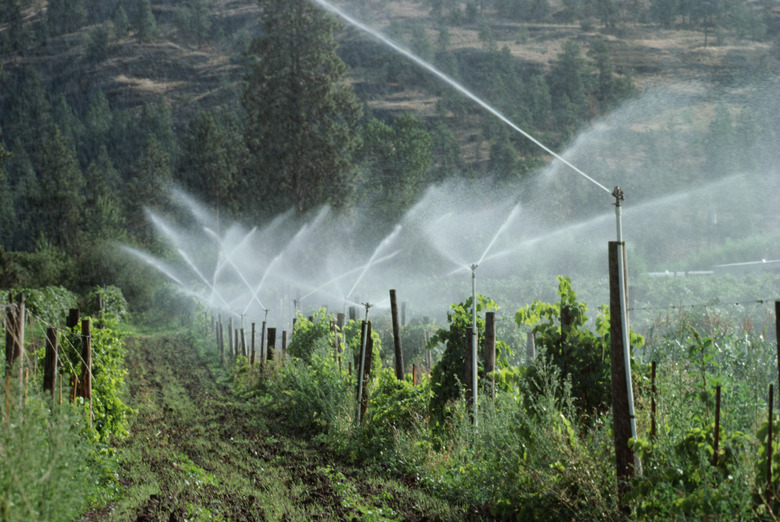Rain Bird Valve Will Not Turn Off
Rain Bird valves are the controls responsible for controlling the flow of water to parts of or the entire sprinkler system. Most sprinkler systems have two types of valves. The first, the gate or ball valve, is used as the shutoff valve for cutting off the entire system. The second is the zone valve, which is used to shut off sections of the system. Manual or electronic signals tell the Rain Bird valves to open or close, turning on or off the water system. Sometimes valves will not turn off, causing water to continue to leak or run.
Controller
Step 1
Incorrectly set controllers are one of the most common reasons that Rain Bird valves will not turn off. Valves are grouped into sections called zones. Rarely should more than one zone operate at once. If more than one zone is running at the same time, check the sprinkler controller to see if the zones have been accidentally programmed to run at the same time. Solve the problem by changing the sequence of the zones or the timing on the controller to prevent the valves from being on at the same time. Instructions for operating the controller are generally located on the inside panel lid of the box.
- Rain Bird valves are the controls responsible for controlling the flow of water to parts of or the entire sprinkler system.
Debris
Step 1
Rain Bird valves are located in the ground where soil, rocks and loose debris can get into the solenoid of the valve and cause it to become stuck open, allowing continued running or leaking. Located on the top of the valve, the solenoid is controlled by electrical wires from the controller that send signals to open or close the valve. When debris gets in the way, the solenoid does not work correctly. Take off the solenoid covering and remove the solenoid plunger and filter. Rinse with clean water and re-install. Check the system to determine if the valves are now operating correctly.
Loose or Open Solenoid
Step 1
The solenoid also acts as a manual control for opening the valve manually, bypassing the controller. This is useful when draining the system for the winter or other events, such as preforming maintenance on a section of the system. If your valve is still operating when it should be off, twist the solenoid in a clockwise direction to close. This same motion will also work to tighten the solenoid if it is loose.
- Rain Bird valves are located in the ground where soil, rocks and loose debris can get into the solenoid of the valve and cause it to become stuck open, allowing continued running or leaking.
Parts
Step 1
Valves have working parts that wear out, become damaged or are lost. Simple things, such as the solenoid O-ring, plunger assembly or retainer, can cause the valve not to turn off when damaged, missing or worn out. Occasionally parts can also become misaligned and not seal correctly because of debris. If the valve is continuing to run after eliminating other potential causes, turn off the water and check operating parts for issues. A damaged or bent solenoid O-ring is often one of the most common problems, easily fixed by inspecting and re-installing or replacing it correctly if it is twisted or damaged. If debris is causing misalignment, clean the affected parts and re-install into the correct position. Run the system again to make sure everything is operating properly.
- Valves have working parts that wear out, become damaged or are lost.
- A damaged or bent solenoid O-ring is often one of the most common problems, easily fixed by inspecting and re-installing or replacing it correctly if it is twisted or damaged.
